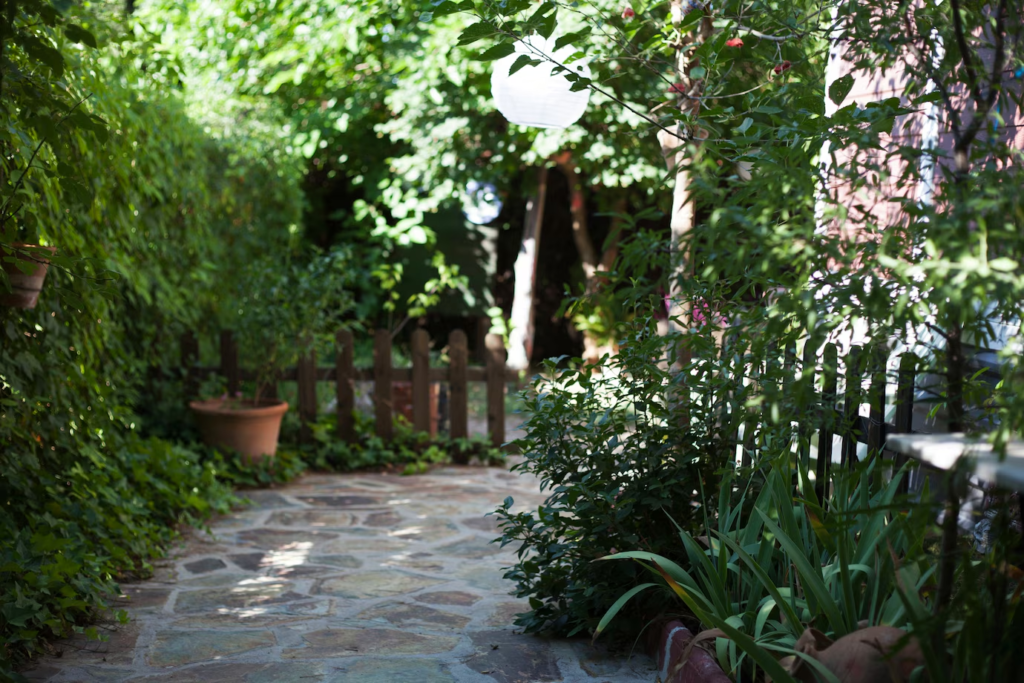What Is Modern Landscape Design?

Contemporary landscaping is one of the most popular ways to enhance your modern home. It’s a practical design that isn’t overly decorative and incorporates subtle elements like clean lines and simple details.
To help you create a cohesive look, we asked experts what this style is and their best tips for pulling it off.
What is modern landscape design?
Modern landscape design is based on simplicity and clean lines.
“Often these lines reflect or relate to the architecture of the building,” says Kate Singleton, Tilly’s design director.
Therefore, modern landscape design seeks to combine nature with architecture. It’s a minimalist approach to design: imagine sleek mid-century modern meets great outdoor living.
Another way to understand modern landscaping is to compare it to more traditional landscapes.
“Whereas traditional landscaping can focus on richness—lots of color, variety of plants and textures,” says Brian Clayton, CEO and co-founder of GreenPal. “Contemporary design is all about restraint and intention.”
For example, modern landscaping gardens may focus on prominent garden features, but the garden itself should appear neat and simple, allowing the viewer to focus on a few memorable items.
Elements of modern landscape design
The color palette is muted
To blend the architecture with the landscape, use a muted color palette. Clayton recommends greens, grays and maybe a little blue because they blend well with the environment.
Joe Raboin, vice president of design at Oldcastle APG, agrees. “Immerse yourself in a natural environment instead of using a lot of bright colors,” he says. “Many designers and their clients choose different shades of gray.”
One way to maintain a muted color palette is to use hardscapes.
“Hardscaping with natural textures, such as volcanic rock or dry soil, lends itself well to these design ideas,” Singleton says. The colors are muted and at the same time reminiscent of the natural environment.
Trees have a purpose
Plants featured in modern landscaping are chosen not only for their appearance, but also for their function. Trees should be chosen because they provide privacy, shade or wind protection and have a sleek appearance, Clayton said.
Or they add focus to the look, Singleton adds. A dark burgundy Japanese maple or large, textured agave will work well. Plants also require less maintenance in general.
“Think about ornamental grasses, structural shrubs and native plants that require less maintenance,” Singleton says. Other popular plants for modern landscapes include succulents or bamboo, Raboin said.
Opposite
Just as modern landscape design is dominated by minimalism and clean lines, so is symmetry. For example, decorative hedges or manicured bushes that run parallel to each other are a way to create symmetry.
“Another approach is to use geometric shapes, which create a clean, organized feel,” says Clayton. This can be easily achieved through careful scene selection.
“Using ceramic floor tiles to create symmetrical paths is also a popular design solution,” says Raboin. “You can alternate pieces with grass or turf for a natural look, or use gravel or pebbles for more contrast.”
Tips for Modern Landscape Design
Start your modern landscaping design with a plan. Clayton recommends thinking of your space as a blank canvas and choosing elements that create a feeling of love when you walk into it. “Creating a modern landscape is as much an experience as planting,” says Clayton.
Select a few quality materials and repeat them. This will create a feeling of symmetry and cohesion. When it comes to walkways or patios, Raboin suggests thinking about how to modernize the space with repeating patterns or ceramic hardware.
Clayton suggests landscaping using gravel, slate or polished concrete for walkways and patios.
Simplify your color palette.
Choose structural elements as focal points, whether it’s a water feature or a specific plant, says Singleton.
Furniture and decor should be sleek and simple: less is more.
Choose plants with a modern style, such as succulents, says Raboin.